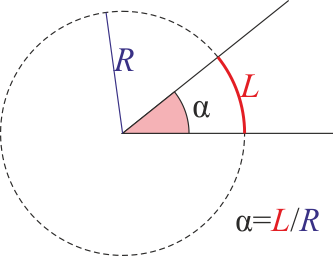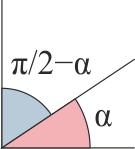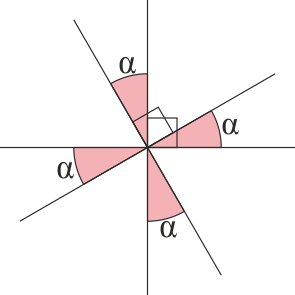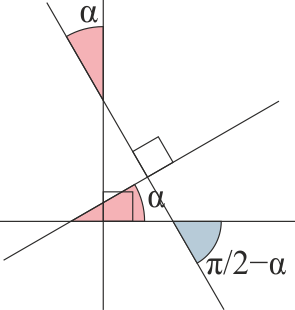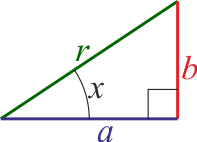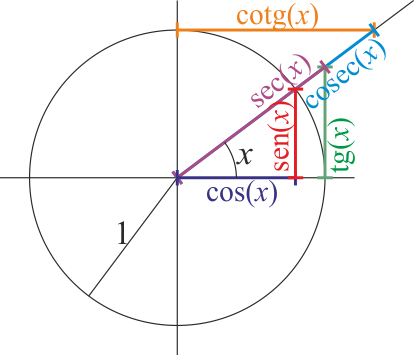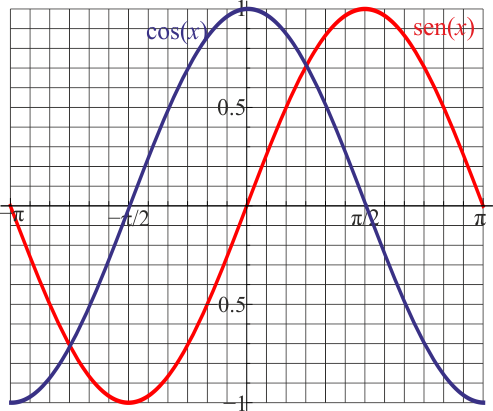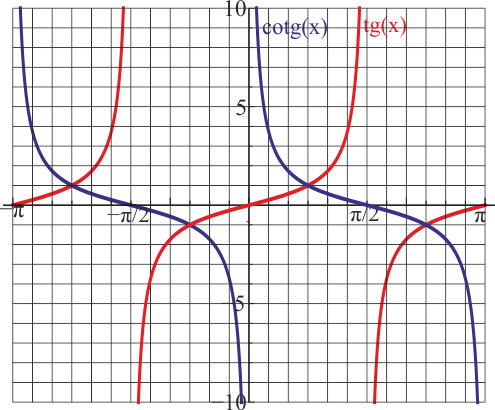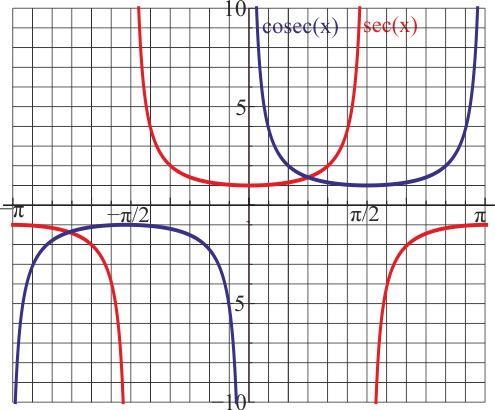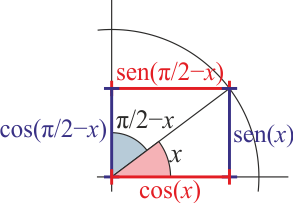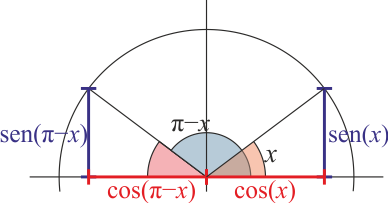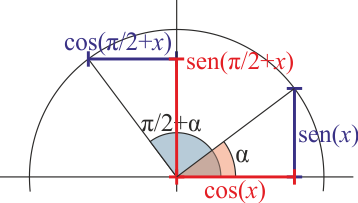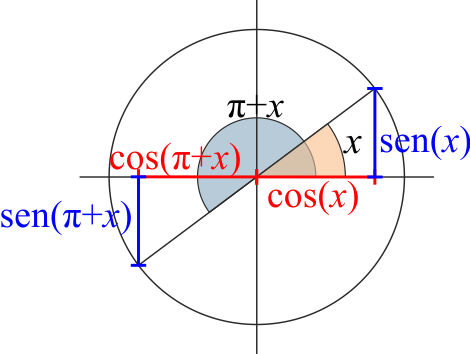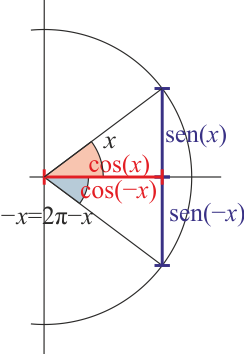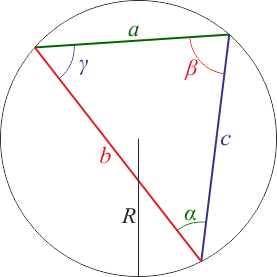Tabla de fórmulas de trigonometría
De Laplace
(Diferencias entre revisiones)
(→Ángulo doble) |
(→Derivadas) |
||
| Línea 223: | Línea 223: | ||
:<math>\frac{\mathrm{d}\ }{\mathrm{d}x}(\mathrm{sen}(x)) = \cos(x)</math> | :<math>\frac{\mathrm{d}\ }{\mathrm{d}x}(\mathrm{sen}(x)) = \cos(x)</math> | ||
| - | :<math>\frac{\mathrm{d}\ }{\mathrm{d}x}(\cos(x)) = -\mathrm{sen}(x)</math> | + | :<math>\frac{\mathrm{d}\ }{\mathrm{d}x}(\cos(x)) = -\,\mathrm{sen}(x)</math> |
:<math>\frac{\mathrm{d}\ }{\mathrm{d}x}(\mathrm{tg}(x)) = \frac{1}{\cos^2(x)}=1+\mathrm{tg}^2(x)</math> | :<math>\frac{\mathrm{d}\ }{\mathrm{d}x}(\mathrm{tg}(x)) = \frac{1}{\cos^2(x)}=1+\mathrm{tg}^2(x)</math> | ||
Revisión de 14:36 28 sep 2012
Contenido |
1 Ángulos
1.1 Definición
1.2 Complementario y suplementario
- Complementario
- Suplementario
1.3 Opuestos por el vértice y alternos
1.4 Rotación de ejes
- Mismo origen
- Diferente origen
2 Definiciones
2.1 Geométrica
- Coseno

- Seno

2.2 Analítica
El argumento x debe estar expresado en radianes
2.3 Exponenciales complejas
- (
 )
)
2.4 Funciones adicionales
- Tangente

- Cotangente

- Secante

- Cosecante

2.5 En la circunferencia unidad
3 Gráficas desde −π a π
- Seno y coseno
- Tangente y cotangente
- Secante y cosecante
4 Relaciones entre funciones
4.1 Identidades básicas
4.2 En función de la tangente
4.3 En función de la tangente del ángulo mitad
5 Tabla de valores particulares
| ° | rad | sen | cos | tg |
|---|---|---|---|---|

| 
| 
| 
| 
|

| 
| 
| 
| 
|

| 
| 
| 
| 
|

| 
| 
| 
| 
|

| 
| 
| 
| 
|
6 Suma y diferencia de ángulos
- Seno
- Coseno
- Tangente
7 Ángulo doble y ángulo mitad
7.1 Ángulo doble
- Seno
- Coseno
- Tangente
7.2 Ángulo mitad
- Seno
- Coseno
- Tangente
8 Sumas en productos
9 Derivadas y primitivas
El argumento debe estar obligatoriamente en radianes
9.1 Derivadas
9.2 Primitivas
10 Fórmula de Euler
- Fórmula general
- Casos particulares
11 Teoremas del seno y del coseno
11.1 Teorema del seno
(R: radio de la circunferencia circunscrita)
11.2 Teorema del coseno
Misma notación que en el teorema del seno
y las correspondientes a los otros dos ángulos.




